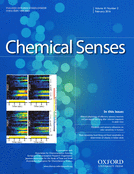“Cannabis extracts have been used for the treatment of epilepsy for centuries.
Yet, until recently, this empirical use was not linked to a known mechanism of action. Of the two main and most frequently investigated compounds derived from the cannabis plant, the mechanism of action of tetrahydrocannabinol (THC) is relatively clear and well documented (via CB1R distributed mainly centrally and CB2R distributed mainly peripherally).
The components of endocannabinoid system (ECS) are omnipresent in our bodies and have very divergent roles. Modulating ECS may have therapeutic potential in many human maladies, including psychiatric disorders (e.g., depression, posttraumatic stress disorder, anxiety, or schizophrenia), neurologic conditions, including epilepsy and neurodegenerative processes, diabetes and its complications, obesity, pain management, cancer treatment, graft versus host disease, treatment of chemotherapy side effects, and so on. The list is long, and it is constantly growing.
We investigated changes in the endocannabinoid system and glucose metabolism during temporal lobe epileptogenesis.
]]>
 “Clinical studies indicate that cannabidiol (CBD), the primary nonaddictive component of cannabis that interacts with the serotonin (5-HT)1A receptor, may possess analgesic and anxiolytic effects.
Overall, repeated treatment with low-dose CBD induces analgesia predominantly through TRPV1 activation, reduces anxiety through 5-HT1A receptor activation, and rescues impaired 5-HT neurotransmission under neuropathic pain conditions.”
https://www.ncbi.nlm.nih.gov/pubmed/30157131
https://insights.ovid.com/crossref?an=00006396-900000000-98870
“Clinical studies indicate that cannabidiol (CBD), the primary nonaddictive component of cannabis that interacts with the serotonin (5-HT)1A receptor, may possess analgesic and anxiolytic effects.
Overall, repeated treatment with low-dose CBD induces analgesia predominantly through TRPV1 activation, reduces anxiety through 5-HT1A receptor activation, and rescues impaired 5-HT neurotransmission under neuropathic pain conditions.”
https://www.ncbi.nlm.nih.gov/pubmed/30157131
https://insights.ovid.com/crossref?an=00006396-900000000-98870

 “The herb Cannabis sativa has been traditionally used in many cultures and all over the world for thousands of years as medicine and recreation.
However, because it was brought to the Western world in the late 19th century, its use has been a source of controversy with respect to its physiological effects as well as the generation of specific behaviors. In this regard, the CB1 receptor represents the most relevant target molecule of cannabinoid components on nervous system and whole-body energy homeostasis.
Thus, the promotion of CB1 signaling can increase appetite and stimulate feeding, whereas blockade of CB1 suppresses hunger and induces hypophagia.
Taste and flavor are sensory experiences involving the oral perception of food-derived chemicals and drive a primal sense of acceptable or unacceptable for what is sampled. Therefore, research within the last decades focused on deciphering the effect of cannabinoids on the chemical senses involved in food perception and consequently in the pattern of feeding.
In this review, we summarize the data on the effect of cannabinoids on chemical senses and their influences on food intake control and feeding behavior.”
“The herb Cannabis sativa has been traditionally used in many cultures and all over the world for thousands of years as medicine and recreation.
However, because it was brought to the Western world in the late 19th century, its use has been a source of controversy with respect to its physiological effects as well as the generation of specific behaviors. In this regard, the CB1 receptor represents the most relevant target molecule of cannabinoid components on nervous system and whole-body energy homeostasis.
Thus, the promotion of CB1 signaling can increase appetite and stimulate feeding, whereas blockade of CB1 suppresses hunger and induces hypophagia.
Taste and flavor are sensory experiences involving the oral perception of food-derived chemicals and drive a primal sense of acceptable or unacceptable for what is sampled. Therefore, research within the last decades focused on deciphering the effect of cannabinoids on the chemical senses involved in food perception and consequently in the pattern of feeding.
In this review, we summarize the data on the effect of cannabinoids on chemical senses and their influences on food intake control and feeding behavior.”
 “Asthma is characterized by chronic lung inflammation and airway hyperresponsiveness. Asthma remains a major public health problem and, at present, there are no effective interventions capable of reversing airway remodelling.
“Asthma is characterized by chronic lung inflammation and airway hyperresponsiveness. Asthma remains a major public health problem and, at present, there are no effective interventions capable of reversing airway remodelling.
 “A growing number of evidences accumulated about critical metabolic role of cannabinoid type 1 receptor (CB1), carnitine palmitoyltransferase-1 (CPT1) and peroxisome proliferator-activated receptors (PPARs) in some peripheral tissues, including adipose tissue, liver, skeletal muscle and heart.
Taken together, these data indicate that the inhibition of CB1 could ameliorate lipid metabolism via the stimulation of the CPT1A and CPT1B expression in vivo. Simultaneously, the PPARα and PPARγ expression levels significantly differed compared to that of PPARβ in obesity and lipid metabolism-related disorders under blockade of CB1.
Both the mechanism of the influence of CB1 inhibition on lipid metabolism in the examined tissues and the specific mechanism of PPARα, PPARγ and PPARβ involvement in lipid exchange under these conditions remain to be further elucidated.”
“A growing number of evidences accumulated about critical metabolic role of cannabinoid type 1 receptor (CB1), carnitine palmitoyltransferase-1 (CPT1) and peroxisome proliferator-activated receptors (PPARs) in some peripheral tissues, including adipose tissue, liver, skeletal muscle and heart.
Taken together, these data indicate that the inhibition of CB1 could ameliorate lipid metabolism via the stimulation of the CPT1A and CPT1B expression in vivo. Simultaneously, the PPARα and PPARγ expression levels significantly differed compared to that of PPARβ in obesity and lipid metabolism-related disorders under blockade of CB1.
Both the mechanism of the influence of CB1 inhibition on lipid metabolism in the examined tissues and the specific mechanism of PPARα, PPARγ and PPARβ involvement in lipid exchange under these conditions remain to be further elucidated.”